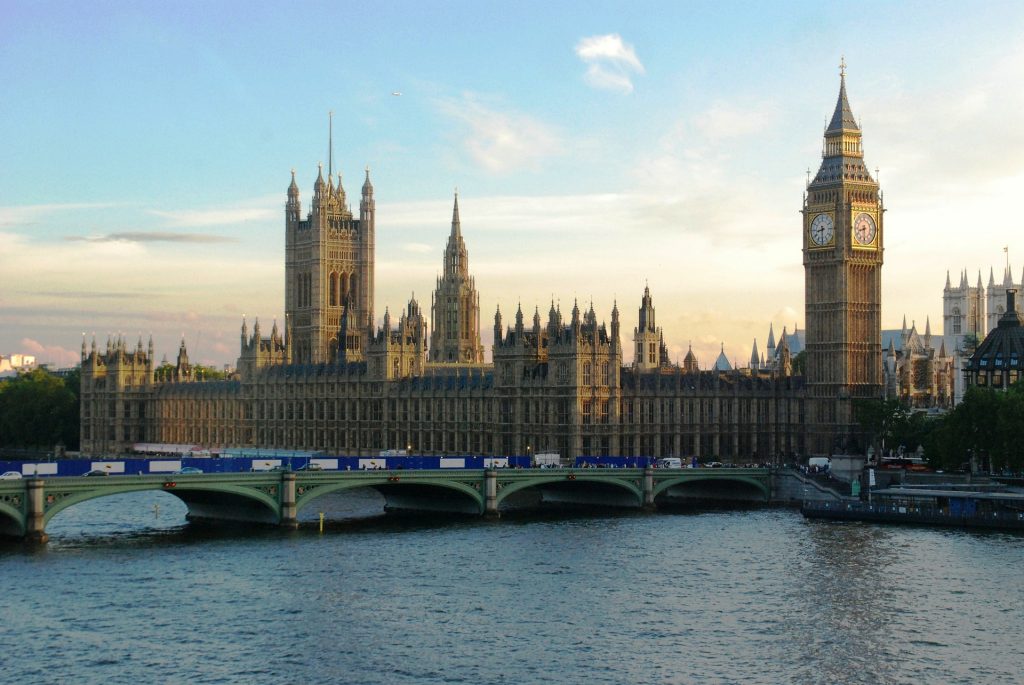
AI Development within the Life Sciences Sector
October 31, 2021
Clear the Lobby: What Laws are MPs voting on this week? W/C 1st November 2021
November 1, 2021China’s Evergrande Crisis: Is It Lehman Crisis 2.0?
Whas happened?
Evergrande, a company started in 1996, previously China’s top-selling real estate property developer had its shares plunged to an 11-year low, reflecting nothing less than an “economic catastrophe” for the Chinese market as termed by US Treasury Secretary. Having its debt obligations amounting to $305 billion, the company recently defaulted on an interest payment and is likely to miss more deadlines.
What is the reason for the sudden trouble?
The Chinese government’s new guidelines for property developers could be one reason that triggered the current catastrophe. In August 2020, the Chinese government announced ‘three red lines’ laws limiting how much a property developer can borrow based on three debt criteria.
The new laws effectively prevent Evergrande from taking on any new debt. Evergrande’s business greatly suffered as it relied heavily on borrowing. The corporation had to sell its land and other assets at a loss to pay off its debts.
This asset transaction allegedly led to Evergrande’s insolvency. Another reason could be the unsustainable business model, which was heavily reliant on borrowings.
Impact of this crisis
Many people have equated this crisis to the 2008 Lehman Brothers crisis. The impact of these defaults on the financial institutions in and outside China is anticipated to be adverse. Not only the Evergrande investor would face losses, but the economy as a whole might take a hit which would directly affect the global supply chains.
The lack of transparency in China has made investors and financial institutions apprehensive. This has led to some Chinese banks, insurers, and shadow banks to halt their lending to property developers and check their risk portfolios.
The Bank of China monitors all its developer clients closely to prevent contagion risks; however, the country could witness a substantial reduction in credit within the system.
Article by Advaita Kapoor
The Hydrogen Economy: Is It Finally Here to Stay?
Clean hydrogen has long been toted to be the solution to our pollution and climate woes, but historically it has struggled to break its way into the energy sector. Will recent pushes for economic and industrial decarbonisation finally make hydrogen a commercially viable alternative for clean energy production?
Why hydrogen?
Exploiting hydrogen’s clean energy potential has captured the imagination of climate-conscious pioneers for decades (In fact, it was used in the first combustion engine in 1808 by François de Rivaz).
Hydrogen can now be used in both gas turbines and fuel cell technology emitting only water, with none of the other harmful by-products produced by burning fossil fuels.
However, most of the hydrogen produced today is based on fossil fuels, accounting for an astronomical 830 million tonnes of CO2 annually, which is the same as the emissions of the UK and Indonesia combined.
Hydrogen has an important role to play in the future of renewable energy. As power networks become increasingly decentralised and reliant on renewable power, so too do they become vulnerable to power outages caused by weather dependant energy sources.
Hydrogen solves this issue by acting as a chemical battery; when energy is in surplus, it can then be used to power electrolysers producing hydrogen to be stored for ancillary or reserve services when the power output is low.
The Norwegian energy company Statkraft have forecast that 20% of EU power consumption by 2050 will be supplied by ‘green’ hydrogen (produced using energy from renewable sources) and that renewables will account for the remaining 80%, provided that we increase our current pace of electrification.
Government support for hydrogen
The UK government announced plans in August this year to provide £900 million of funding to support hydrogen projects around the country.
The government says that this investment will likely create over 9,000 jobs nationwide in the hydrogen sector and has also pledged to increase hydrogen production from 3 Gigawatts (GW) per year to 5GW by 2030.
The US department of energy has recently unveiled its own ‘Hydrogen Shot’, which ‘seeks to reduce the cost of clean hydrogen by 80% to $1 per 1 kilogram in 1 decade.’
This subsidisation of clean hydrogen allows it to directly compete with grey hydrogen (produced using energy from natural gas) and black hydrogen (produced using coal) making it more appealing to both investors and manufacturers alike.
Big Oil weighing in
The oil supermajors can see that fossil fuel’s days are numbered, and they are therefore seeking a lucrative alternative to fill the inevitable gap on their balance sheets left by falling demand for oil.
Chevron, the second-largest oil company in the US, has released its $10 billion strategy, which targets an increased production of low-carbon hydrogen, to accelerate its own decarbonisation goals.
Saudi Aramco, Saudi Arabia’s state-owned oil giant, has also announced plans to venture into the hydrogen business. They have said that they will export more than 4 million tonnes of green hydrogen by 2030, produced using renewable energy from their world-class solar fields.
The kingdom wishes to maintain its position as a world leader in the energy sector.




